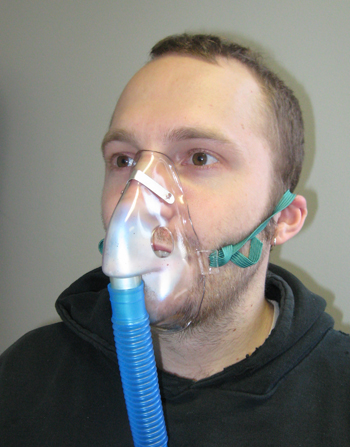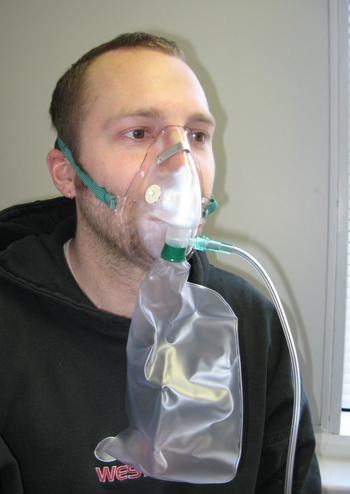
Oxygen Administration
last authored:
last reviewed:
Introduction
Supplmental oxygen, which comes in many forms, is used to increase oxygen saturation.
Indications for supplemental oxygen include focus on hypoxemia, rather than symptomatic dyspnea.
Ensure you are plugged into oxygen, not air!
Indications
Oxygen administration is one of the most frequently used medications. Indications include:
Cautions
Oxygen will help improve hypoxia, though will not increase ventilation, or removal of waste C02. For some patients with chronically high CO2 levels ("CO2 retainers"), respiratory drive depends on oxygen levels. Accordingly, improving oxygenation through oxygen administration can reduce or eliminate respiratory drive, creating a life-threatening situation. For these patients, the goal of oxygen therapy should be a saturation of 88-92%.
Nasal Prongs
Nasal prongs are often the first approach to providing oxygen. Small prongs fit into the nostrils and provide low-flow oxygen. They are the least constraining, as they allow talking and eating.
Flow rates are generally 1-6L/min. Above this, the higher flows can dry the nasal passages and cause pain.
FiO2 is generally 4%/L; accordingly, percentages range from 24-44%.
Simple Mask
Simple masks, which normally use flow rates of 5-8 LPM, can attain FiO2 of 35-55%.
Aerosols can often be given as well.
Venturi Mask

The Venturi mask is useful for providing mid-range levels of oxygen, and is one of the most accurate methods of providing a set FiO2.
Percentage depends on which connector is used, with ranges from 24-50%.
Non-Rebreather Mask
 The non-rebreather mask provides 80-100% oxygen, based on flows of 12-15L/min of oxygen.
The non-rebreather mask provides 80-100% oxygen, based on flows of 12-15L/min of oxygen.
Before using, pinch the mask closed and allow the reservoir to fill. Once on the patient, it is important that the reservoir not collapse.
Resources and References
Royal Children's Hospital, Melbourne
British Thoracic Society - Guideline for emergency oxygen use in adult patients.
